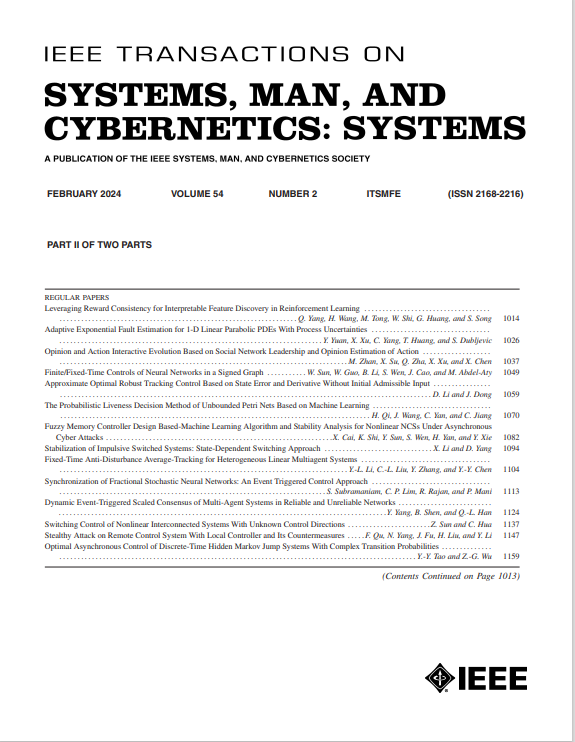Computational Creativity by Diversity-Optimized Intelligent Search: An Automatic Approach to Artificial Synthesis of Trigonometric Identities
IF 8.6
1区 计算机科学
Q1 AUTOMATION & CONTROL SYSTEMS
IEEE Transactions on Systems Man Cybernetics-Systems
Pub Date : 2025-03-26
DOI:10.1109/TSMC.2025.3550723
引用次数: 0
Abstract
This article emphasizes an interesting approach to synthesize computational creativity by a process similar to deductive reasoning with a provision for testing the degree of diversity of the generated instances compared to their predecessors. The above two-step process of expansion and testing is developed here using the best-first search (BFS) on an OR-tree, where the nodes denote trial solutions (new creations) and edges represent parent-child connectivity satisfying the rules of the given problem domain. Two alternative extensions of BFS are examined in view of the cost function employed at the nodes to ultimately determine the optimal node in the search tree within a user-defined depth as the solution to the creativity problem. The first algorithm considers maximizing the diversity cost earned by a node with respect to its parent, while the second considers maximizing the difference between the diversity and the penalty cost earned by a node with respect to the root node. The significant contribution of the present research lies in ensuring diversity of the solutions during iterative expansions of the tree as well as the novelty of the optimal solution (best node) across runs of the same program. The relative performances of the two algorithms are compared in the context of their applicability. Performance analysis undertaken reveals that the proposed algorithms outperform their competitors with respect to three important metrics. The proposed algorithms have successfully been employed in developing chapter-end exercises for trigonometric identity proving problems.多样性优化智能搜索的计算创造力:一种人工合成三角恒等式的自动方法
本文强调了一种有趣的方法,通过类似于演绎推理的过程来综合计算创造力,并提供了测试生成的实例与其前辈相比的多样性程度的规定。上面的两步扩展和测试过程在这里使用or树上的最佳优先搜索(BFS)进行开发,其中节点表示尝试解决方案(新创建),边表示满足给定问题域规则的父子连接。考虑到在节点上使用的成本函数,最终确定用户定义深度内搜索树中的最优节点作为创造力问题的解决方案,研究了BFS的两种可选扩展。第一种算法考虑最大化节点相对于父节点获得的分集代价,第二种算法考虑最大化节点相对于根节点获得的分集代价和惩罚代价之差。本研究的重要贡献在于保证了树在迭代展开过程中解的多样性,以及在同一程序的运行中最优解(最佳节点)的新颖性。从适用性的角度比较了两种算法的相对性能。进行的性能分析表明,所提出的算法在三个重要指标方面优于其竞争对手。所提出的算法已成功地用于开发三角恒等式证明问题的章末练习。
本文章由计算机程序翻译,如有差异,请以英文原文为准。
求助全文
约1分钟内获得全文
求助全文
来源期刊

IEEE Transactions on Systems Man Cybernetics-Systems
AUTOMATION & CONTROL SYSTEMS-COMPUTER SCIENCE, CYBERNETICS
CiteScore
18.50
自引率
11.50%
发文量
812
审稿时长
6 months
期刊介绍:
The IEEE Transactions on Systems, Man, and Cybernetics: Systems encompasses the fields of systems engineering, covering issue formulation, analysis, and modeling throughout the systems engineering lifecycle phases. It addresses decision-making, issue interpretation, systems management, processes, and various methods such as optimization, modeling, and simulation in the development and deployment of large systems.
 求助内容:
求助内容: 应助结果提醒方式:
应助结果提醒方式:


